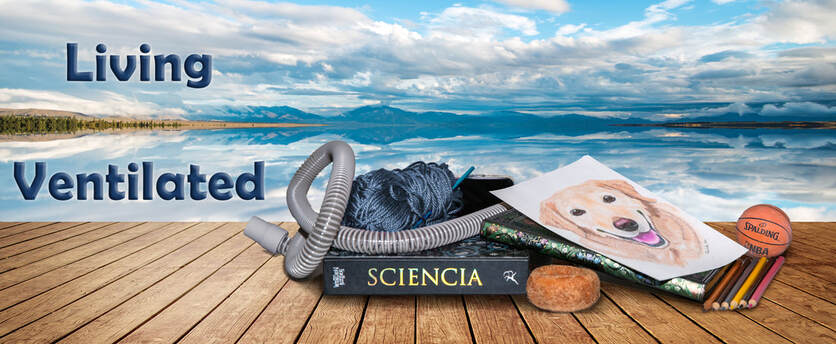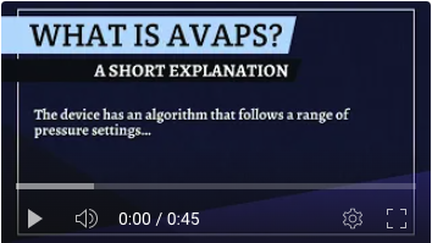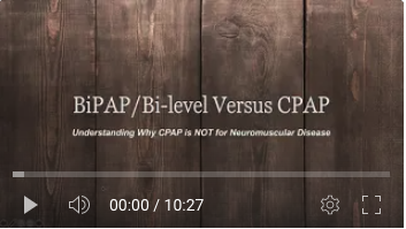|
By Andrea Klein Founder & President, Breathe with MD, Inc. "Having this knowledge will assist in partnering with your care team, troubleshooting, medical self-advocacy (speaking up for yourself), and proactively managing your respiratory health." In this blog post, I’m covering seven Non-invasive Ventilation (NIV) settings-related topics everyone who uses NIV should understand if they are living with Neuromuscular Disease (NMD). Having this knowledge will assist in partnering with your care team, troubleshooting, medical self-advocacy (speaking up for yourself), and proactively managing your respiratory health. 1. Know your device type, brand, and model. “It’s black and gray, has a water container thingy, and is about the size of a shoebox.” No, that’s NOT the description I’m talking about. The following are some questions you should be able to answer about your home use mechanical/assisted ventilation device.
2. Know your machine. What I like to call a “basic bi-level” device (also known as a BPAP or BiPAP) is going to offer pressure-only support and fewer options to customize each delivered breath. This means it may not be synchronized with your breathing. It will have a lower maximum pressure setting which may not be high enough to support those with very weakened inspiratory muscles and usually will not have the ability to set the Expiratory Positive Airway Pressure (EPAP) lower than 4 cm H20. (Some with NMD need very low or no EPAP to achieve full breathing muscle rest during sleep.) The basic bi-level device will also have no internal battery and will not come with external batteries. You will be able to purchase external batteries, but in the United States (US), insurance often denies coverage of them. The cost of external batteries, how long the batteries can operate the machine, as well as a lack of a designed-for-use transport bag, will make this device less suited for use outside of the home. Basic bi-levels are considered “rent to own” in the US. Most medical insurance companies will require you to make 8-12 months of payments (depending on the specific insurance plan), and when the insurance plan’s "cap" is reached, nothing further will be owed. At that time, the patient will own it. Other alternatives include a non-portable ventilator (often unsupported by respiratory equipment providers) or a multi-mode, multi-prescription, portable ventilator that can be used for both non-invasive ventilation and invasive ventilation via a trach tube. Today's ventilators are larger and offer pressure, volume, and a combination of the two forms of support, with several different modes or types of ventilation available on the same machine. They offer more customization for each breath and may result in better synchronization between the user’s breathing and the device. Ventilators include internal batteries, external batteries, and in some cases “hot-swappable” batteries that can be removed and replaced during use, making them best suited for 24/7 users and those who will be taking their ventilation on the go. These devices can offer multiple prescriptions to be enabled for sleep, day use, and/or when more support is needed such as while ill, with a toggle functionality to move from one prescription to another. Portable ventilators tend to cost significantly more than the basic bi-level device and are not a “rent to own” option in the US but a continuous rental. Purchasing one of these “out of pocket” is generally not practical and makes their required regular maintenance and support difficult or impossible. A respiratory equipment provider is required to respond 24/7 to assist in supporting ventilators and replace them within hours or less time. If you owned the device yourself, you would be without access to a backup device unless you purchased a second one. Some who use ventilators have a spare in their home (often covered by medical insurance, if device use is at or near 24 hours/day). In other cases, the respiratory equipment provider keeps a device of the same make and model in their “fleet” so that a rapid replacement can occur, should your ventilator malfunction or for your use during required regular maintenance. 3. Know what mode of ventilation you are using and the settings enabled. You do not have to understand the way your settings work; that’s the Respiratory Therapist’s job. You, however, need to know what mode and settings are enabled on your mechanical ventilation device for a variety of reasons. You know the names of your prescription drugs and the prescribed dosages, so you need to know what your mechanical ventilation settings are. They too are a prescription written by your clinician. Store them in a note on your smartphone, in photos on your mobile device and/or computer, and/or print and keep them in a personal health binder, whatever works best and is the safest place for future reference.
The above are a few relevant questions, and the settings enabled on your device will depend on the mode of ventilation enabled. For example, a BiPAP S/T mode will not include a tidal volume. If you do not know what mode or type of ventilation is enabled and what the settings are, ask the prescriber and/or the respiratory care company that is supporting your device. This should have been provided with the paperwork you signed to acquire and get trained on the device. Like everything in your medical record, you have a right to receive it at any time. As those settings are changed, update your personal record of them. For years, I kept photos of my ventilator settings menu screens only on my smartphone. When I upgraded the phone, those photos inadvertently did not get transferred to the new phone. One afternoon, my Respiratory Therapist (RT) came to do a required software update on my portable ventilator. Later that night I realized my settings were no longer enabled; instead, what seemed to be default settings in an entirely different mode of ventilation were on the machine. (Both the RT and I should have tried the device before he left, and the subsequent problem would not have occurred. It was a lesson we both learned.) I called the respiratory equipment provider's after-hours support, and my RT came over promptly, but he was delayed due to difficulty in finding my settings in the paper chart and their not being in the electronic chart. It took a few weeks to catch, but a couple of changes we made in my settings a year or two before were not made when the settings were re-enabled during that emergency house call. 4. Understand active versus passive circuit. A well-known pioneer in mechanical ventilation is known for his use of active circuit ventilation with his patients. It requires that the ventilator tubing include an exhalation valve for the exhaled air (CO2) to enter and escape and that the mask interface has no holes for air to escape. Because most do include holes, the user is required to tape or glue them when using active circuit ventilation. Additional things to know:
A passive ventilator circuit is more commonly used today, as the majority of mask interfaces include holes for exhaled air (CO2) to escape. A basic bi-level device and a ventilator allow passive ventilation circuits to be enabled. 5. Know the common settings errors in Neuromuscular Disease (NMD). Ventilation settings can be problematic for those with NMD and often require weeks to get adjusted to them with multiple instances of the patient communicating with the provider and/or RT, asking questions, and sharing what feels wrong or uncomfortable. If you struggle with asking questions or requesting changes in what has been prescribed, this will be a more difficult process for you to get what is needed. Medical self-advocacy is an essential skill most living with an NMD develop during the initiation of mechanical ventilation if not previously acquired through other complex episodes of care. It seems, at least in the US, there is a lack of clinicians who understand the niche of NMD ventilation settings for restricted patterns of breathing and under-ventilation and an abundance of clinicians who understand CPAP settings for obstructive sleep apnea. The most common management error for those with NMD and weakened breathing muscles is for a clinician to prescribe CPAP (Continuous Positive Airway Pressure Support) with only one pressure to inhale and exhale against. Second to that mistake is for the clinician to prescribe bi-level ventilation with an EPAP that is too high for someone with weakened breathing muscles to exhale against. Generally, this number should be lower than 6, with some clinicians arguing it should be 4 or lower. Some schools of thought say it should even be set to 0, requiring active circuit ventilation. A third most common settings error is for the clinician to enable settings with low span. Span is the difference between IPAP and EPAP values. Some schools of thought say these numbers should have a difference of 10 or more, for example, 14 for IPAP and 4 for EPAP. It is not uncommon for someone to get their bi-level ventilation mode enabled with an IPAP of 12 and an EPAP of 8, and those settings will not assist in ventilating (moving air into and out of) the individual’s lungs during sleep, nor will they provide respiratory muscle rest, if the breathing muscles are weakened.
Part of why many have challenges getting settings enabled appropriately is that every person with NMD is different. The pressure, tidal volume, etc. that is needed for one person could be wrong for another. Factors like how much air one can hold in their lungs, their weight and height, whether their upper airway is subject to collapse during sleep, and how restricted their rib cage is from skeletal abnormalities that accompany NMD like scoliosis, kyphosis, etc. are all factors that can influence the settings enabled on their ventilation device. Sometimes an overnight sleep study will assist in this process but only if the clinicians present and reviewing the results from that study are familiar with neuromuscular breathing weakness and understand our weak effort to breathe is rooted in our muscle weakness. I wish I could say otherwise, but for many of us, it’s trial and error when it comes to mechanical ventilation settings, especially if we’re seeing a clinician who does not specialize in Neuromuscular breathing weakness. When we see a specialist in Neuromuscular breathing weakness, that clinician usually has the experience and knowledge to prescribe settings that are more appropriate and with fewer changes needed. For that reason, you may wish to obtain a second opinion referral to another clinician who can better assist with your settings. 6. Settings may need to change. The same way that our other muscle groups become weaker, in many forms of NMD, so do the breathing muscles. That means that the fully supportive, comfortable settings we may have worked hard to find could need to change over time. You may be wondering how you will know a change is needed. You could experience new fatigue and/or daytime sleepiness, require more hours of sleep to feel as rested as you did previously, and/or may develop new shortness of breath. Others that are monitoring their oxygen saturation during the day may find that after a certain time of day, their oxygen saturation drops consistently and does not improve with use of an insufflation exsufflation device/mechanical cough assistance. This could signal the need for a change in nighttime settings. Adjusting a setting (i.e. IPAP, tidal volume, etc.) may resolve the symptoms, but some may need to switch from one mode of ventilation to another (for example a move from BiPAP S/T to AVAPS S/T or AVAPS AE). Some individuals with NMD find they need to introduce some daytime ventilation or increase their hours of use with existing daytime ventilation. This could mean starting mouthpiece ventilation or using daytime nasal ventilation when one is not already doing so. This change in function is why many switch from a basic bi-level device to a multi-mode, portable ventilator, to have additional options and more flexibility as needs change. It is common to find that individuals with NMD quietly suffer and do not ask to explore mechanical ventilation settings changes or moves from one device to another unless they have a respiratory crisis or their clinician initiates the change. Settings changes usually require the coordination of both the device prescriber and the RT working with you to try different options. Most RTs work for companies that have rules that prevent their changing ventilation settings without a medical provider’s order to support the change. This is in part why your settings are checked at regular intervals and data feeds are taken. If a change is identified, you will need to answer for it, and your RT may feel uncomfortable working with you unless an order is in your chart to back up the change. Personally, I don’t make my own changes even though I have access to do so, in the event of an emergent need to change them, if no RT appointment were available, for example. What has helped to simplify my settings changes in the past is to contact both my neuromuscular breathing specialist and my RT about my concerns and any symptoms I am having. I’ve even recorded pulse oximetry during sleep with a device I purchased myself that allows reports to be generated to show drops in Oxygen saturation and have shared them with the neuromuscular breathing specialist. The doctor would then make a determination of which settings might be beneficial to change and faxes an order to the RT at the respiratory care company with a range of changes agreed to. For example, a suggestion may be made to change my target tidal volume with an increase of 10-30 points, whichever is most comfortable and relieves symptoms. For each potential setting change to consider, the doctor lists an agreeable range for the change, and the RT will come out and make only one setting change at a time, allowing me to try the change when made and for a few days up to two weeks. Once a final selection of any one setting change is made, the RT and I will determine if we want to introduce another change the physician has authorized. We never change more than one setting at the same time, because if we see improvement, we won’t know which setting change made the difference or if it was both. For me, the settings change process requires the RT to come to my house multiple times, and when final selections of settings are made, the RT faxes back the physician with those details. Then the physician writes and faxes the RT a new order without the ranges and just the specific values. The updated order is filed in my chart with the respiratory equipment provider. 7. Everyone is different; there is no one right collection of settings. Periodically, someone will ask for Breathe with MD Support Group members’ settings to be shared. I have participated in this exercise, sharing my own settings. But we are all so different and no two people of the same size, pulmonary function test results, and form of NMD are going to use the exact or even similar settings. It may be helpful to compare settings to determine if one’s settings may be completely off base, but a wide range of settings comparisons can leave the questioner more confused. The bottom line: mechanical ventilation settings are complicated, and no one approach to determining the best settings works for everyone. Having at least basic knowledge should help you be better equipped to advocate for your care needs until the correct settings are enabled for your optimal support and comfort. Keep in mind that there is typically an adjustment phase for even appropriate settings and that some temporary soreness may be experienced in breathing muscles that are getting stretched more than they're used to. For any questions, reach out to your prescribing clinician and/or RT. Editor's Note: Are you an individual living with a Neuromuscular Disease (NMD) who uses mechanical ventilation and have a story to share about hospitalization, illness, emergencies, advanced medical testing (MRI, CT scan, etc.), or surgical procedures? Or, do you have another idea for a blog post? Start the process of helping others in the NMD community by telling us about it at https://breathewithmd.org/storyform.html, or send an email to [email protected]. Comments are closed.
|
AboutLiving Ventilated celebrates those in the NMD community who use assisted ventilation. Archives
August 2024
Categories |
Breathe with MD, Inc. is a U.S. registered 501(c)(3) nonprofit organization. Donations are tax deductible to the extent allowable by law.
Note: This website should not be used as a substitute for medical care. For medical care or advice, please seek the care of a clinician who specializes in the breathing issues of those with Neuromuscular Disease (NMD).
Web Hosting by Hostgator
Note: This website should not be used as a substitute for medical care. For medical care or advice, please seek the care of a clinician who specializes in the breathing issues of those with Neuromuscular Disease (NMD).
Web Hosting by Hostgator





 RSS Feed
RSS Feed